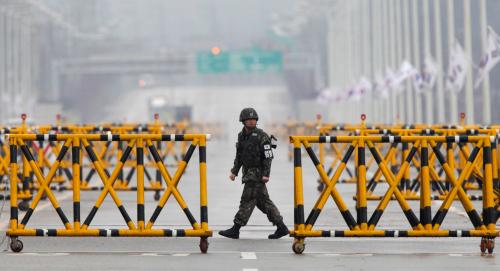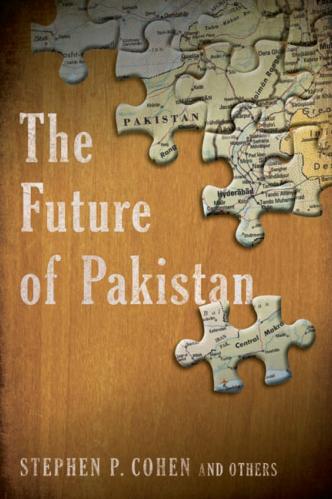On February 26, Iran held its first elections since the signing of the nuclear deal. A coalition of left-leaning reformists and moderate centrists who support President Rouhani fought hard against conservatives in the nationwide elections for a new parliament and a new Assembly of Experts. The coalition did not win a majority in either body, but the results are widely seen as a victory for moderation and a referendum on the nuclear accord and rapprochement with the West.
This optimistic view rests on the assumptions that the elections were in effect a nationwide referendum on reform, and that they enable the government to put its reform agenda into action. I offer cautionary notes for both.
The referendum
The moderate coalition did not win the control of either body because it was not allowed to run enough candidates in all jurisdictions. Heavy vetting by the Guardian Council, which oversees elections, had left some districts with only conservative candidates. But the coalition tried to signal nationwide support for reform using a creative voting strategy. They put together lists of approved candidates and asked voters to vote for the lists in their entirety, not picking and choosing among candidates on different lists.
This strategy worked particularly well in the parliamentary race in Tehran, where the coalition’s entire list of 30 candidates, some hardly known to voters, won seats while prominent conservatives did not.
The economic backdrop
In the June 2013 presidential election, Rouhani won a definitive victory beating his five conservative rivals by promising better economic times. The “victory” in last month’s elections is all the more significant because, two years into Rouhani’s presidency, there has been no economic recovery.
True, this is not his fault. Oil prices, the main determinant of economic growth in Iran, have fallen by three-quarters since he took office, and the nuclear deal he had pinned his hopes on took longer to sign and for its benefits to trickle in. To fight inflation, as he had promised, he pursued tight monetary and fiscal policies that further depressed incomes.
In the summer of 2015, two years after he was elected, there were 300,000 fewer industrial jobs, according to labor force surveys. Data from expenditure surveys published by the Statistical Center of Iran show that compared to the 2012-13 Iranian year before Rouhani took office, in 2014-15 real per capita expenditures were down by 13.8 percent in rural areas and 5.4 percent in urban areas (excluding Tehran). Last year alone, 1.3 million people nationwide fell below the $5 (PPP) per person per day poverty line. Significantly, in Tehran real expenditures per capita rose by 8.5 percent.
Rouhani’s singular palpable economic achievement to date has been to bring down inflation from a high of 34.7 percent when he took office to less than 10 percent this year. Too bad that cheers for doing so quickly subsided when Iran’s money-illusioned public realized that lower inflation did not mean rising real incomes.
It is against this grim background that the ambiguous electoral outcome feels like victory to Rouhani’s team. However, the victory was decisive only in Tehran where, as I mentioned above, the average voter was actually better off compared to Ahmadinejad’s last two years.
Reading Tehran’s overwhelming support for moderates as the expression of a national rise of a moderate middle class may be going too far. Only 15 percent of votes were cast in Tehran, where people are more affluent and the middle class dominates. Nationwide, about 60 percent of Iran’s urban population can be classified as middle-class (using the often-used minimum of $10 per person per day); in Tehran they account for 84 percent of the population.
Enacting reform
President Rouhani needs the approval of the parliament to put his economic reforms into practice. Much of these reforms are pro-market and have been spelled out in the Sixth Development Plan (2016-2021), which was submitted to the parliament just before the elections but not yet published. The new parliament will be voting in coming months.
With a quarter of the parliament’s seats to be decided in runoffs six weeks from now, it is too early to tell if Rouhani’s supporters will have a working majority in the new parliament. The decided seats are roughly equally divided between moderates, conservatives, and independents.
Parliamentary politics in Iran are not run by established political parties, so how members vote depends on the specific bill. Certain items on Rouhani’s pro-market agenda, such as making the labor laws more employer-friendly, may draw the ire of the left-leaning reformists who topped the coalition’s parliamentary list in Tehran. Initiatives to limit the economic reach of the powerful parastatal and to promote competition may be unpalatable to conservatives and many independents alike. Other measures to attract foreign investment may find detractors to the left and right.
Despite doubts about these elections as a nationwide referendum in support of Rouhani’s agenda, there is no question that they have increased his popularity and solidified his position. He is set to follow his predecessors in winning a second four-year term in 2017, which would give him ample time to turn his diplomatic victory in the nuclear negotiations abroad into economic transformation at home.


Commentary
Iran’s election and economic reforms in the post-nuclear era
March 9, 2016